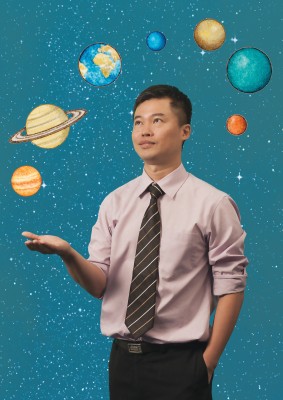Innovative Thinkers of the Public Service

Testing the waters
The task was straightforward: connect two reservoirs – Sungei Punggol and Sungei Serangoon – so that water could flow from one to the other during storms to avert floods. The solution was utilitarian: build a conventional drain to link the two.
But when the then minister of National Development, Mr Mah Bow Tan, saw the plan, which he described as “very unexciting”, he urged for something different, something that Singaporeans could enjoy. The Housing & Development Board (HDB) was appointed to create a scenic linkage that is now the multi-award-winning Punggol Waterway (PWW).
HDB’s idea was ambitious: carve out a massive 4.2-kilometre waterway that would function like a drain but look like a natural river. It would even have meanders to go around existing rail transit structures.
But the other public agencies involved in the development had their concerns. “There was a lot of scepticism … whether we (HDB) have the expertise to do this type of work,” said Mr Yap Tiem Yew, HDB’s Building and Infrastructure Group Director, who headed the PWW working committee.
Would deep excavation of the land affect the existing MRT and LRT infrastructure? Could the soft marine clay soil destabilise the land? Would construction work pollute reservoir waters? The questions came fast and furious.
But they were legitimate concerns, acknowledged Mr Yap, as this had never been done in Singapore. The team was also proposing many new ideas such as the creation of the longest stretch of eco-drains in Singapore to filter and cleanse rainwater before it reaches the waterway, and the use of barrier plants along the waterway instead of railings, wherever possible, to soften the landscape.
“As everything was new, we had to convince our working partners of the feasibility,” said Mr Alan Tan, project director for PWW. For several months, the HDB team carried out extensive environmental and geotechnical studies to convince the stakeholders (like PUB, URA, LTA, SLA and NParks) that theirs was a workable scheme.
“Doing this has proven that sometimes, what we fear is unfounded.
We must always try to learn new things, and see on a localised area and if some things work, I think it benefits [the] whole Singapore,” said Mr Yap.
During PWW’s construction, an agency told the HDB team that the waterway’s level would vary during the wet and dry seasons. When the water level dips, the grass on the edge would dry up, looking unsightly.
Mr Yap related: “We could react angrily, ‘Hey, how come you didn’t tell us [that] early’ or we could say, ‘Let’s find a solution together’.”
So together, they found hardier plants that could tolerate the fluctuating water levels. This resolved the issue and also brought unexpected diversity to the waterway’s landscape.
It’s all well that ends well for the team that now brims with pride when they talk about the jewel they have created. “We actually made it happen!” beamed Mr Yap.
One man can make a difference
It was 2006. A video clip that was part of the syllabus was playing but the junior college class watching was struggling to grasp the scientific theories flashed across the screen. At that moment, their physics teacher, Mr Wee Loo Kang, had an epiphany: “This cannot be the right way to get students to learn...and there needed to be a change.”
He explained: “Physics is abstract, and without any tools for [the students] to interact with these phenomena, it’d be practically impossible for them to have a deeper understanding.”

Keen to create productive and interactive learning tools, Mr Wee, now Senior Specialist at the Ministry of Education (MOE)’s headquarters, began to explore building realistic and well-designed computer simulations. To do this, he tapped the Open Source Physics research community that shares free curriculum resources, allowing users to modify and redistribute source codes. He didn’t have the Java programming skills at first but that didn’t deter him. Mr Wee spent hours of his free time mastering Java with the help of online tutorials and by posting questions to professors across the globe.
His key project Gravity-Physics by Inquiry, which was developed over five years on his own time, won MOE’s top innovation award in 2012. The judges described it as “a fundamental breakthrough in how physics was taught”. For example, in one of the simulation exercises, students are virtually despatched to the Earth’s moon to launch a rocket into space to calculate (and hence experience) the minimum kinetic energy required to escape from the moon’s and Earth’s gravity pull.
Word of Mr Wee’s interactive and engaging teaching methods spread widely. Teachers from five other junior colleges now use his lessons which are shared freely on his blog. So far, Mr Wee has created and adapted more than 65 physics simulations for the Singapore physics curriculum – leading the shift from the standard “drill and practise” approach to an inquiry-based model. Now, the ministry is extending his ideas to the new Teachers’ Handbook for Teaching Secondary Physics.
So if Singapore were to have a surge in the number of physicists, we might have to thank Wee Loo Kang for it.
- POSTED ON
Jan 10, 2013
- TEXT BY
Heng Yishi
- PHOTOS BY
John Heng









